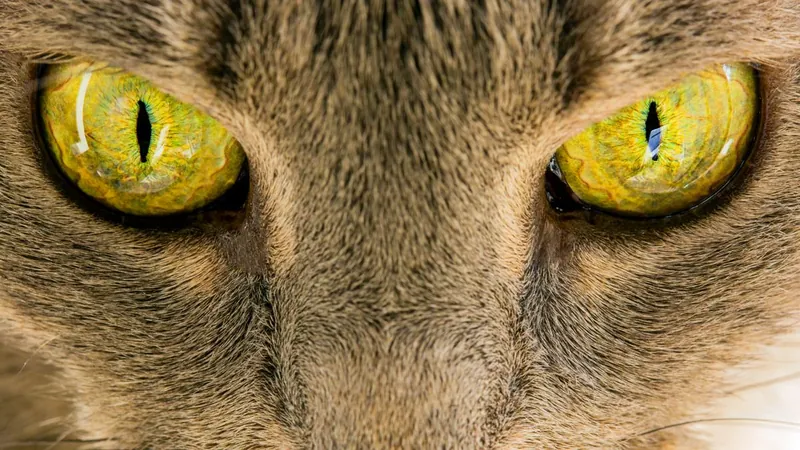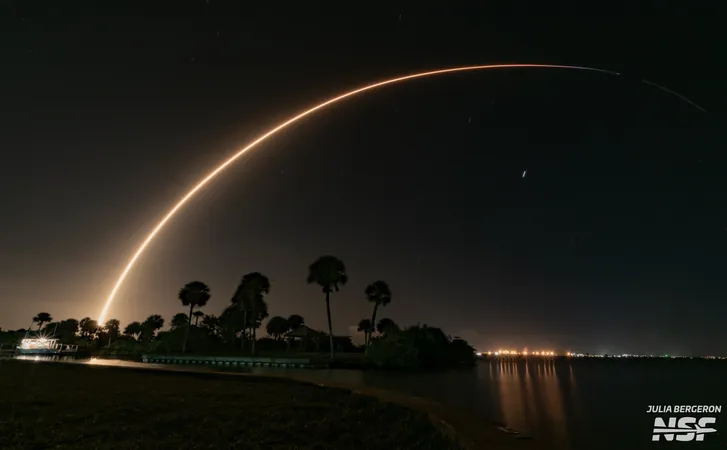
Revolutionary 'Robotic Cat's Eyes' Technology Set to Transform Drones and Autonomous Systems!
2024-10-30
Author: John Tan
Introduction
A groundbreaking advancement in computer vision, inspired by the remarkable eyesight of cats, is poised to enhance the capabilities of drones, robots, self-driving cars, and other autonomous machines like never before! With this innovative system, these vehicles could finally overcome their struggles to see clearly in challenging environments.
Challenges in Autonomous Vision
Traditionally, self-driving vehicles have been plagued by difficulties in adverse weather conditions like rain and fog, which can severely impact sensor and camera performance. However, the latest research, detailed in the journal Science Advances on September 18, unveils a vision system designed to tackle these very issues.
The Inspiration Behind the Technology
Utilizing the anatomical advantages of feline eyes, which excel in various light conditions, scientists have created a system that incorporates advanced lenses and sensors. Cats possess a unique vertical slit pupil that minimizes glare during the day and expands to capture more light at night, augmented by a reflective layer known as the tapetum lucidum—this feature allows them to see better in low-light situations.
Innovative Design Features
The innovative robotic vision system mirrors these functionalities, boasting a slit-like aperture that reduces unnecessary light and emphasizes significant objects in bright settings while utilizing reflective layers to heighten visibility in dark environments.
Expert Insights
"Robotic cameras often struggle to recognize objects among busy or concealed backgrounds, especially with fluctuating lighting. Our design overcomes this by enabling robots to obscure unnecessary details and highlight essential objects," explained Young Min Song, the lead author of the study and a professor at Gwangju Institute of Science and Technology (GIST) in South Korea.
Energy Efficiency and Performance
What's more, this pioneering vision system is energy-efficient, relying on a specialized lens instead of bulky computer processing. Early tests demonstrated its ability to successfully blur background distractions while meticulously focusing on designated target objects. The researchers employed a neural network—a sophisticated assembly of machine learning algorithms that mimics human brain processing—to enhance the system's object detection capabilities.
Future Prospects
While further improvements are necessary to augment the pixel resolution for practical application, scientists are optimistic that this technology could find its way into various sectors, including military applications and surveillance systems. Imagine drones with the tactical advantage of tracking and recognizing targets in dynamically changing environments where visibility is typically compromised!
Conclusion
As autonomous systems continue to proliferate, this 'robotic cat's eyes' technology may mark a pivotal step toward a future where machines can see and react with the same acuity as the natural world. Stay tuned—this is a development that could redefine how we engage with technology!




 Brasil (PT)
Brasil (PT)
 Canada (EN)
Canada (EN)
 Chile (ES)
Chile (ES)
 España (ES)
España (ES)
 France (FR)
France (FR)
 Hong Kong (EN)
Hong Kong (EN)
 Italia (IT)
Italia (IT)
 日本 (JA)
日本 (JA)
 Magyarország (HU)
Magyarország (HU)
 Norge (NO)
Norge (NO)
 Polska (PL)
Polska (PL)
 Schweiz (DE)
Schweiz (DE)
 Singapore (EN)
Singapore (EN)
 Sverige (SV)
Sverige (SV)
 Suomi (FI)
Suomi (FI)
 Türkiye (TR)
Türkiye (TR)